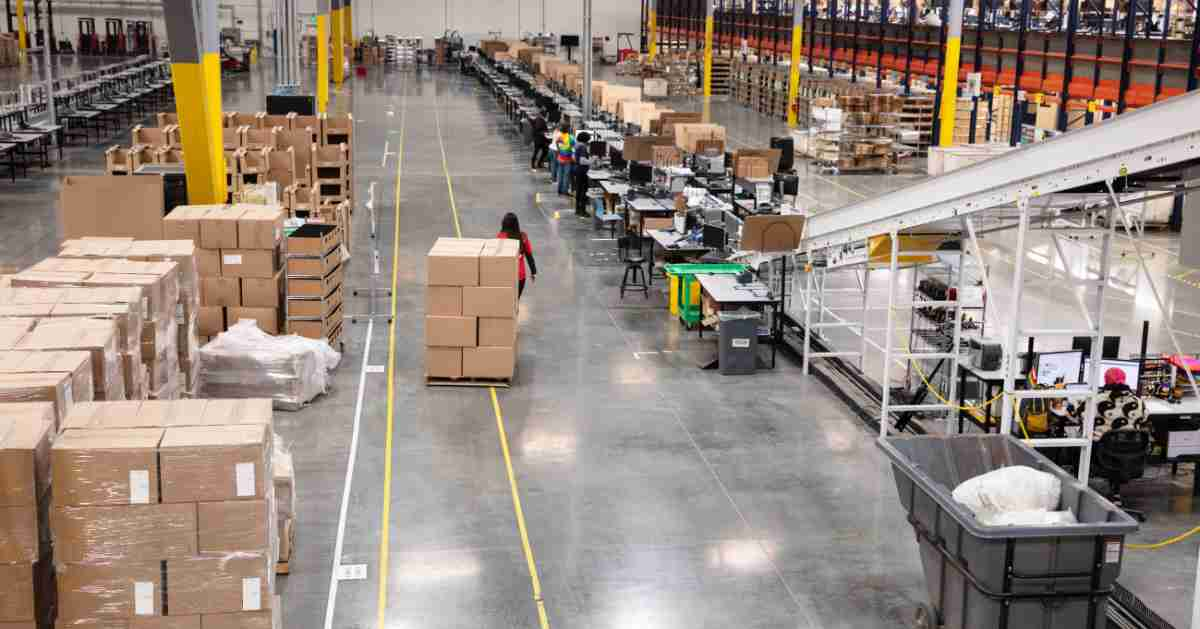Technology Trends Reshaping 3PL Fulfilment Services

Introduction
The world of logistics and supply chain management has been undergoing a significant transformation in recent years, driven by rapid technological advancements. 3PL (Third-Party Logistics) fulfilment services, which play a crucial role in warehousing, order processing, and delivery operations, are no exception to this revolution. In this comprehensive guide, we will explore the technology trends that are reshaping 3PL fulfilment services and how they are impacting businesses across industries.
The Evolution of 3PL Fulfilment Services
To appreciate the impact of technology trends on 3PL fulfilment services, let’s first understand the evolution of these services. Traditionally, 3PL providers offered basic warehousing and transportation solutions. However, as customer expectations, market dynamics, and technological capabilities evolved, so did the role of 3PL fulfilment services.
Modern 3PL fulfilment services encompass a wide range of activities, including inventory management, order processing, picking and packing, shipping, and even customer returns handling. Today’s 3PL providers are expected to provide end-to-end solutions that are efficient, accurate, and responsive to the needs of ecommerce and retail businesses.
Key Technology Trends in 3PL Fulfilment
Several technology trends are driving the transformation of 3PL fulfilment services. Let’s explore these trends and their impact on the industry:
1. Automation and Robotics
Automation and robotics have become integral to 3PL fulfilment operations. Automated guided vehicles (AGVs), autonomous robots, and conveyor systems are used to streamline tasks such as order picking, packing, and inventory management. These technologies enhance efficiency, reduce errors, and accelerate order fulfilment.
2. Artificial Intelligence and Machine Learning
Artificial Intelligence (AI) and Machine Learning (ML) algorithms are leveraged for demand forecasting, inventory optimization, and route planning. AI-powered chatbots and virtual assistants also enhance customer service by providing real-time support and order tracking.
3. Internet of Things (IoT)
The Internet of Things (IoT) is used to monitor and track inventory and shipments in real-time. Sensors and connected devices provide valuable data on the condition and location of goods, enabling better visibility and control over the supply chain.
4. Blockchain Technology
Blockchain technology is employed to enhance transparency and security in 3PL fulfilment. It provides an immutable ledger for recording transactions, ensuring the authenticity and traceability of products throughout the supply chain.
5. Predictive Analytics
Predictive analytics utilizes historical data and AI algorithms to forecast demand, optimize inventory levels, and identify potential issues in the supply chain. This proactive approach helps prevent stockouts and overstocking.
6. Cloud Computing
Cloud computing platforms enable real-time data sharing and collaboration among supply chain stakeholders. Cloud-based warehouse management systems (WMS) and order management systems (OMS) enhance accessibility and scalability.
The Role of TSP Fulfilment in Leveraging Technology
Time-Sensitive Performance (TSP) Fulfilment plays a crucial role in harnessing the power of technology trends within the 3PL industry. TSP focuses on optimizing every aspect of the fulfilment process to meet tight delivery timelines. By incorporating TSP principles, 3PL providers can ensure faster order processing, reduced delivery times, and improved customer satisfaction.
TSP Fulfilment leverages advanced technologies such as real-time tracking, AI-powered routing, and predictive analytics to ensure that orders are processed efficiently and delivered promptly. This not only enhances the customer experience but also enables businesses to stay competitive in the fast-paced ecommerce landscape.
Case Study: Maximizing Efficiency with Technology-Driven 3PL Fulfilment
To illustrate the real-world impact of technology-driven 3PL fulfilment, let’s examine a case study:
ABC Electronics – Revolutionizing Fulfilment
ABC Electronics, a leading electronics retailer, was facing challenges in meeting customer demands for faster delivery. They partnered with a technology-driven 3PL provider and implemented several key technologies:
1. Automation and Robotics
The 3PL provider introduced robotic automation into ABC Electronics’ warehouse, dramatically reducing order processing times. Robots efficiently picked, packed, and shipped orders with precision.
2. Artificial Intelligence and Machine Learning
AI algorithms were used to optimize inventory levels, reducing excess stock and minimizing the risk of stockouts. Machine learning models improved demand forecasting accuracy.
3. Internet of Things (IoT)
ABC Electronics implemented IoT sensors on their high-value products. These sensors provided real-time data on product location and condition, allowing for better inventory management and security.
4. Predictive Analytics
Predictive analytics helped ABC Electronics identify potential supply chain bottlenecks in advance. This proactive approach enabled them to make necessary adjustments and prevent disruptions.
5. Cloud Computing
Cloud-based systems provided ABC Electronics with real-time visibility into their supply chain. This allowed for seamless collaboration with their 3PL provider and other stakeholders.
The combination of these technologies, along with TSP Fulfilment principles, led to a significant improvement in order processing times, reduced shipping costs, and enhanced customer satisfaction for ABC Electronics.
Future Outlook: Embracing Technological Advancements
As technology continues to advance, the future of 3PL fulfilment services holds even more transformative potential. Emerging technologies like 5G connectivity, autonomous vehicles, and advanced data analytics will further revolutionize the industry. Businesses that embrace these advancements will gain a competitive edge by delivering faster, more accurate, and cost-effective fulfilment solutions.
Conclusion
Technology trends are reshaping the landscape of 3PL fulfilment services, offering businesses the opportunity to optimize their supply chains, reduce costs, and exceed customer expectations. The integration of automation, artificial intelligence, IoT, blockchain, predictive analytics, and cloud computing is revolutionizing the industry.
By incorporating TSP Fulfilment principles and embracing these technology trends, 3PL providers can ensure faster order processing, reduced delivery times, and improved customer satisfaction. As we look ahead, it is evident that technology will continue to be a driving force in shaping the future of 3PL fulfilment services. Businesses that adapt and leverage these technologies will be well-positioned to thrive in the dynamic world of supply chain management.
